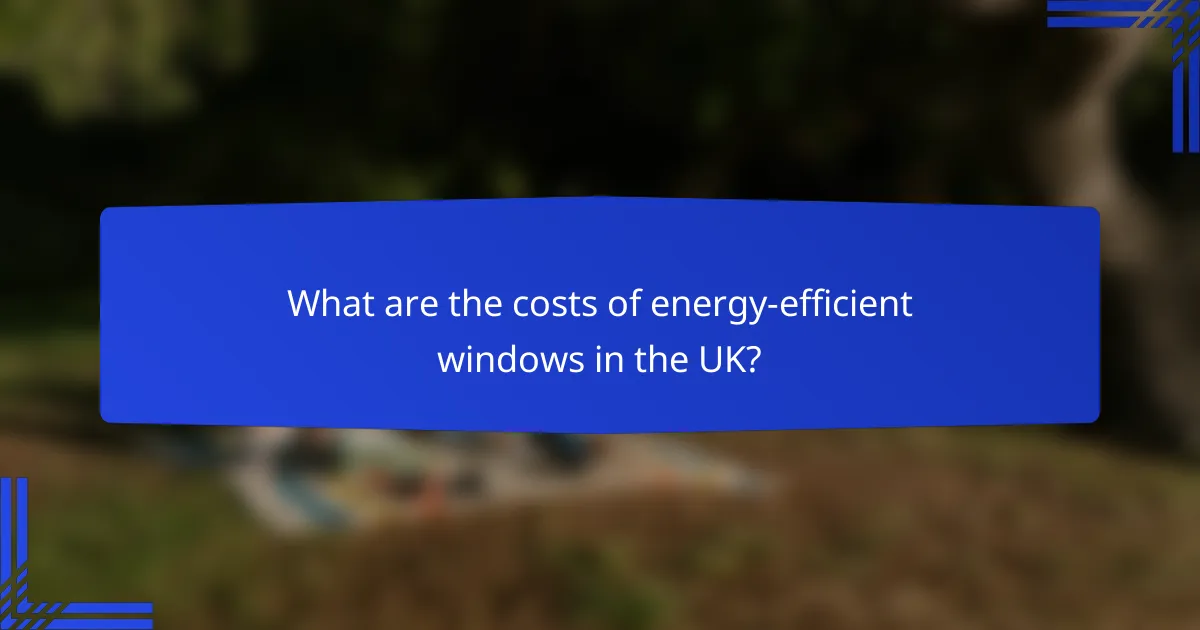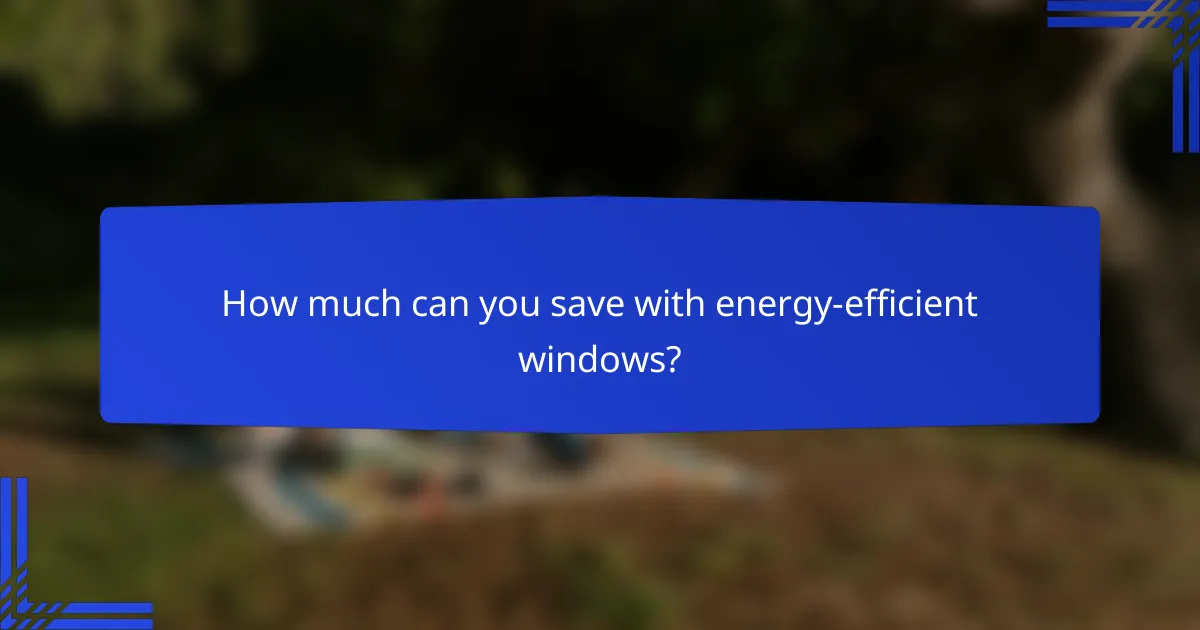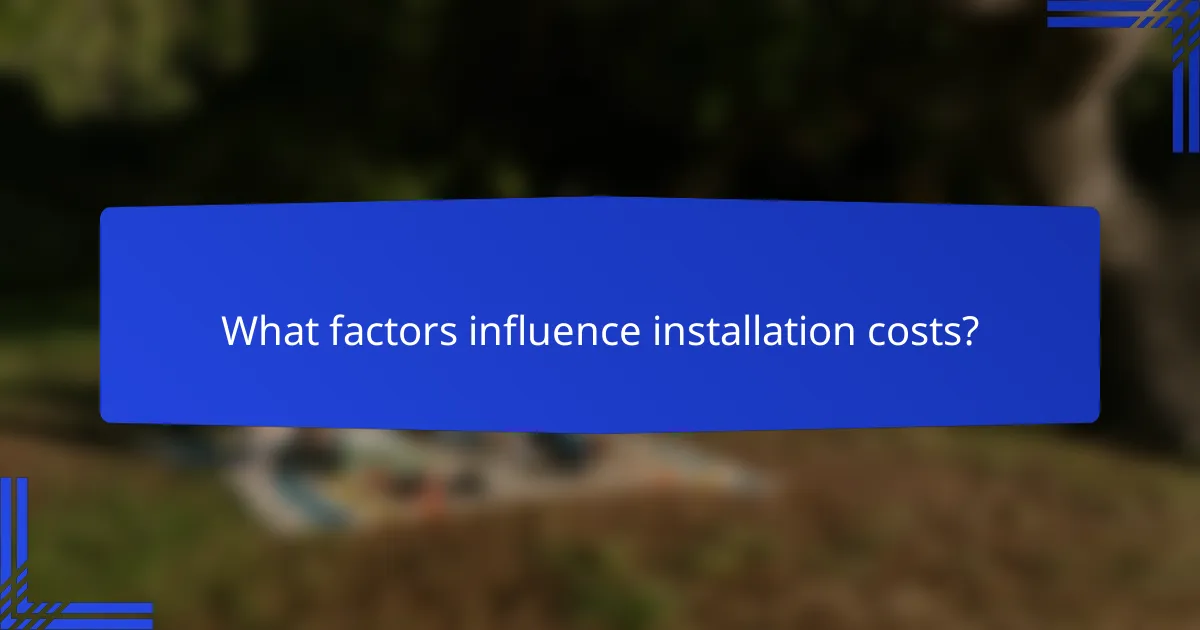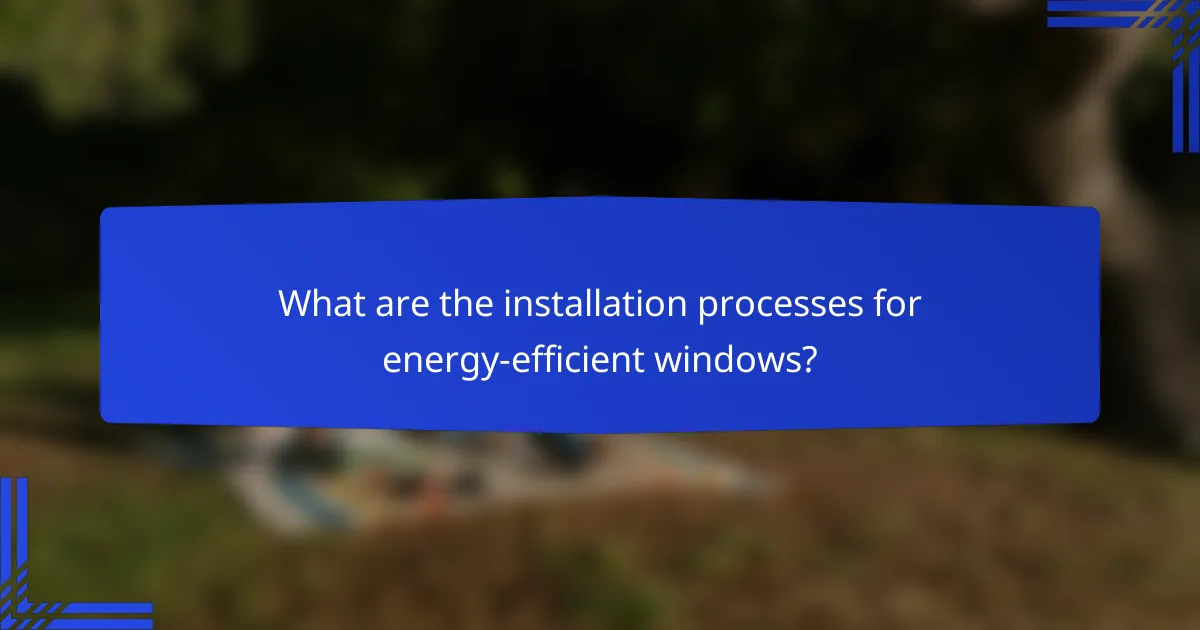Investing in energy-efficient windows can greatly impact your home’s energy consumption and overall comfort. Prices typically range from £300 to £1,000 per window, influenced by factors such as type and brand. While the initial investment may seem high, these windows can lead to annual savings of 10-25% on energy bills, making them a cost-effective choice in the long run.

What are the costs of energy-efficient windows in the UK?
The costs of energy-efficient windows in the UK can vary significantly based on factors such as type, brand, and installation. Generally, homeowners can expect to invest anywhere from £300 to £1,000 per window, depending on the specifications and features chosen.
Average price range for double-glazed windows
The average price range for double-glazed windows in the UK typically falls between £400 and £800 per window. This price includes the cost of materials, such as uPVC or timber frames, and the double-glazing itself, which enhances insulation and energy efficiency.
When considering installation, additional costs may arise, including labor fees, which can add another £100 to £300 per window. It’s essential to obtain multiple quotes to ensure competitive pricing.
Cost comparison of brands like Velux and Everest
Velux windows, known for their roof window solutions, generally range from £500 to £1,200, depending on size and features. Their energy-efficient models often include advanced glazing options that improve thermal performance.
Everest, a prominent brand in the UK for various window types, offers double-glazed windows starting around £600. Their products are often marketed for durability and energy efficiency, making them a popular choice among homeowners.
When comparing brands, consider not only the upfront costs but also the long-term savings on energy bills and potential increases in property value. Always check for warranties and energy ratings to ensure you are making a sound investment.

How much can you save with energy-efficient windows?
Energy-efficient windows can lead to significant savings on heating and cooling costs, often reducing energy bills by 10-25% annually. The exact savings depend on factors like window type, local climate, and existing insulation quality.
Long-term savings on energy bills
Investing in energy-efficient windows typically results in lower energy bills over time. These windows are designed to minimize heat loss in winter and reduce heat gain in summer, which can lead to substantial savings on heating and cooling costs.
For example, homeowners may save anywhere from $100 to $500 annually, depending on their energy usage and local energy prices. Over the lifespan of the windows, which can exceed 20 years, these savings can accumulate to thousands of dollars.
Impact on property value in the UK
Energy-efficient windows can enhance property value in the UK, as buyers increasingly prioritize energy efficiency. Homes with these windows often attract higher offers, reflecting their long-term cost savings and environmental benefits.
Research indicates that energy-efficient upgrades can increase a property’s value by approximately 5-10%. Additionally, properties with a good Energy Performance Certificate (EPC) rating are more appealing in a competitive market, making energy-efficient windows a smart investment for homeowners looking to sell.

What factors influence installation costs?
Installation costs for energy-efficient windows can vary significantly based on several factors, including location, window type, and labor expenses. Understanding these elements can help homeowners budget effectively and make informed decisions.
Labour costs in major UK cities
Labour costs for window installation can differ widely across major UK cities. For instance, cities like London and Birmingham tend to have higher rates, often reaching £100-£150 per day for skilled labor, while smaller towns may see rates closer to £70-£100 per day.
When planning your installation, consider obtaining multiple quotes from local contractors to ensure competitive pricing. It’s also wise to check reviews and ask for references to gauge the quality of work.
Window size and type considerations
The size and type of windows selected can greatly impact installation costs. Standard sizes are generally more affordable, while custom sizes may incur additional fees for both the windows and their installation. For example, a standard double-hung window might cost between £300-£600, whereas a custom bay window could range from £800-£1,500.
Additionally, the type of window frame—such as wood, vinyl, or aluminum—can affect both the initial cost and long-term energy savings. Vinyl frames are often the most cost-effective option, while wood may provide better insulation but at a higher price point.

What are the installation processes for energy-efficient windows?
The installation of energy-efficient windows involves several key steps that ensure proper fit and performance. Understanding these processes can help homeowners achieve optimal energy savings and comfort in their homes.
Step-by-step installation guide
First, measure the window openings accurately to ensure the new windows fit properly. Remove the old windows carefully, taking care not to damage the surrounding structure. Next, prepare the opening by cleaning and applying insulation as needed.
After preparation, place the new energy-efficient windows into the openings, ensuring they are level and square. Secure the windows with screws and apply flashing to prevent water intrusion. Finally, seal the edges with caulk and install any necessary trim.
Common challenges during installation
One common challenge is dealing with unexpected structural issues, such as rotting wood or mold, which may require additional repairs before installation can proceed. Homeowners should inspect the area thoroughly before starting the installation.
Another challenge is ensuring proper insulation and sealing around the windows. Poor sealing can lead to drafts and reduced energy efficiency. It’s crucial to use high-quality caulk and insulation materials to avoid these pitfalls.

What are the benefits of energy-efficient windows?
Energy-efficient windows offer significant advantages, including enhanced insulation and reduced energy costs. By minimizing heat transfer, these windows help maintain comfortable indoor temperatures, leading to long-term savings on heating and cooling bills.
Improved insulation properties
Energy-efficient windows are designed with advanced materials and technologies that enhance insulation. Features like double or triple glazing, low-emissivity (Low-E) coatings, and gas fills between panes significantly reduce heat loss in winter and heat gain in summer.
For example, windows with a U-factor of 0.30 or lower are considered highly efficient. This means they allow less heat to escape, which can lead to lower energy bills, especially in regions with extreme temperatures.
Reduction in carbon footprint
By using energy-efficient windows, homeowners can contribute to a reduction in their overall carbon footprint. Improved insulation means less energy is required for heating and cooling, which in turn decreases greenhouse gas emissions associated with energy production.
Installing these windows can lead to a noticeable decrease in energy consumption, often by 10-25%. This not only benefits the environment but can also qualify homeowners for various energy efficiency rebates or tax credits, depending on local regulations.

How do energy-efficient windows compare to traditional windows?
Energy-efficient windows significantly outperform traditional windows in terms of insulation and energy savings. They reduce heating and cooling costs, making them a worthwhile investment for homeowners looking to lower utility bills over time.
Energy ratings comparison
Energy-efficient windows are rated based on their performance in preventing heat transfer, typically using the U-factor and Solar Heat Gain Coefficient (SHGC). A lower U-factor indicates better insulation, while a lower SHGC means less solar heat enters the home. For instance, energy-efficient windows often have U-factors below 0.30, whereas traditional windows may exceed 0.50.
When comparing energy ratings, look for the ENERGY STAR label, which signifies compliance with energy efficiency standards. This label can help homeowners choose windows that will provide substantial long-term savings on energy bills.
Durability and maintenance differences
Energy-efficient windows are often constructed with advanced materials that enhance durability and reduce maintenance needs. For example, vinyl and fiberglass frames resist warping and do not require painting, unlike traditional wood frames that may need regular upkeep.
Additionally, energy-efficient windows typically come with better warranties, reflecting their expected longevity. Homeowners should consider the long-term benefits of reduced maintenance costs and improved lifespan when selecting windows for their homes.

What are the latest trends in energy-efficient window technology?
The latest trends in energy-efficient window technology focus on enhancing insulation, reducing energy consumption, and integrating smart features. These advancements aim to improve comfort while lowering heating and cooling costs for homeowners.
Smart window technologies
Smart window technologies utilize sensors and automated systems to adjust the tint or transparency of windows based on environmental conditions. This can significantly reduce glare and heat gain, leading to lower energy usage.
Some smart windows can be controlled via mobile apps, allowing homeowners to optimize natural light and temperature throughout the day. Considerations include the initial investment, which can be higher than traditional windows, but the long-term savings on energy bills may justify the cost.
Emerging materials and designs
New materials such as triple-glazed glass and vacuum-insulated panels are becoming popular for their superior thermal performance. These materials can reduce heat loss and improve energy efficiency, making them ideal for both new constructions and retrofits.
Additionally, designs that incorporate low-emissivity (Low-E) coatings help reflect heat while allowing natural light to enter. Homeowners should evaluate the cost versus performance benefits, as these advanced materials may have a higher upfront cost but can lead to significant savings over time.
